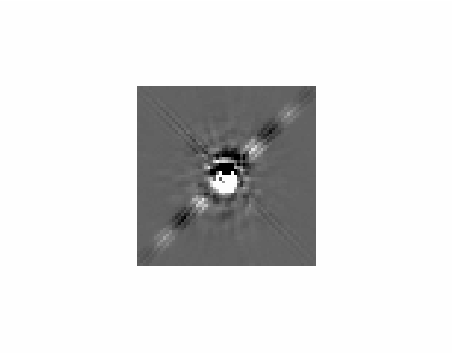 |
We showed in this part the procedures which were applied for the estimate of fluxes of the supernovæ. We saw in particular that the analysis of each supernova was a particular case with an analysis specific each time.
In the case of the supernovæ with a significant signal (2000fr, 2001go, 2001gq and 2001gy), the estimates of fluxes are close to statistical optimality. The estimates with a better model of PSF could reduce the errors from approximately 10% in theory.
In the case of the more remote supernovæ (2001hb and 2001gn), a better knowledge of the PSF could in theory allow a gain from approximately 50% on the bars of errors for intermediate fluxes.
Lastly, in the case of 2001gn, a better alignment of the images and a photometry of PSF would make it possible to obtain a better estimate. One could try to improve the precision of alignment by using the 3 other CCDs of the WFPC2, with a surface 12 times larger and thus a number of objects in the same report/ratio. However, the relative positions of different CCDs are relatively difficult to determine, the precision on the shifts between CCDs is limited to 0.2 pixels. Moreover, their relative position evolves/moves with time anderson2003.
An attempt at alignment by one of the members of SCP with this kind of method made it possible to obtain to obtain a precision of alignment of 1 pixel, same order of magnitude as for alignments that we carried out.
Figure 8.28 shows the residuals of subtractions of two PSFs identical shifted of 0.2 pixels, the residuals are about 15% on the level of the heart of star. It thus seems possible to use an alignment using other CCDs but the precision of alignment will be no matter what it arrives limited by the precision of the shifts between CCD.
 |